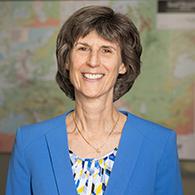Building a Climate-Resilient South Asia

Building a Climate-Resilient South Asia
Eight hundred million South Asians– or half the region’s population—are at risk to see their standards of living and incomes decline as rising temperatures and more erratic rainfalls will cut down crop yields, make water more scare, and push more people away from their homes to seek safer places.
This worst-case scenario and relevant adaptation strategies to climate change underpin the upcoming report South Asia’s Hotspots, whose main findings were presented yesterday at a panel on building climate change resilience in South Asia at the World Bank Spring Meetings.
Its main author, World Bank Lead Economist Muthukumara Mani detailed how specific geographic areas across South Asia or “hotspots” which –until now—were relatively immune to climate change threats could be badly affected by 2050.
To build resilience, the report recommends that South Asian countries better prioritize their financial resources where they’re most needed and target the most vulnerable individuals and families.
Following the presentation, government, civil society, and academia elaborated on concrete climate actions and adaptation strategies to build a more resilient South Asia.
Browse Our Events
Event Finder
Search past and upcoming events by keyword, by topic or by region.
Search by Speakers
Browse the list of speakers for our events.



![[Backup] WBLive_landscape_All-colors - 1](https://s7d1.scene7.com/is/image/wbcollab/trending-World-Bank-Live-landscape?qlt=75&resMode=sharp2)






